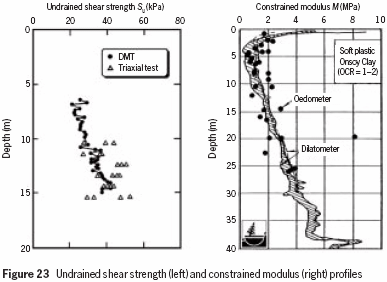Buy the Book
Published By Lankelma
Lankelma is the foremost contractor for onshore in-situ soil testing in the UK. An acknowledged
specialist in CPT, Lankelma also offers a worldwide consultancy and training service.
A.P. van den Berg develops, designs and manufactures geotechnical and environmental soil
investigation equipment for onshore and offshore applications. Specialists in CPT systems and equipment.
Gardline
Gardline Geosciences offers worldwide marine geotechnics, in-house consutancy and services with marine
investigations ranging from nearshore to full ocean depth (down to 3000m).
About the Author
Hans Brouwer studied civil engineering at Delft University in The Netherlands. He has
worked as a part-time lecturer at Amsterdam Polytechnic and was senior partner in a structural
engineering consultancy. He has written a standard textbook in Dutch about the design of
building foundations. He now lives in England where he writes technical textbooks in
English, hopefully to reach a bigger readership.
Quick Links:
Chapter 4
Part 1: Special cones: geotechnical cones
Marchetti dilatometer
MARCHETTI DILATOMETER 4.4 |
| |
The Marchetti dilatometer (Figure 22), or DMT, is a simple device, shaped in the form of a flat blade designed to be pushed into theground. It was developed to evaluate the soil modulus, Es. |
 | Equipment
Excluding the equipment needed to insert the
blade, the apparatus comprises five main items: - dilatometer blade
- control unit
- pneumatic-electrical cable
- calibration device
- pressure source
|
| |
The dilatometer tip consists of a stainless steel blade with a thin flat circular expandable steel membrane on one side. Two different stiffness membranes are available: one for use in variable deposits, the other for soft soils. When testing in homogeneous soft soils where expansion pressures are likely to be small, it is prudent to use the more flexible membrane so as not to obscure subtle soil features.
The dilatometer blade can be advanced into the ground by pushing with a conventional CPT thrust machine. This method of installation will yield the highest productivity with a production rate of up to 100 m per day.
|
| | The test
The pneumatic-electrical cable transmits gas pressure and provides electrical continuity between the control unit and the dilatometer blade. The standard control unit is fitted with a 40-bar capacity Bourdon gauge which is suitable for most soils; however, a more sensitive 16-bar gauge is recommended for soils between very soft and soft.
Marchetti dilatometer tests are performed every 0.2 m down a profile. At each test level the driving load is removed and a regulated gas pressure applied to inflate the membrane. Electrical sensors behind the membrane indicate the start of movement (‘lift off’) and when a displacement of 1.0 mm has been reached. The corresponding pressures at these two displacements are recorded as p0 (lift off) and p1 at 1.0 mm.
Test results
Three index parameters, the material index,ID, horizontal stress index, KD, and dilatometer modulus, ED, can be derived from the test. These are determined from the contact pressure, p0, and the 1.0 mm expansion pressure, p1, together with knowledge of the porewater pressure and in-situ effective stress.
The Marchetti dilatometer is particularly suitable for settlement analysis and for problems requiring accurate soil compressibility data (Figure 23).
|

<< Previous PageNext Page >>


